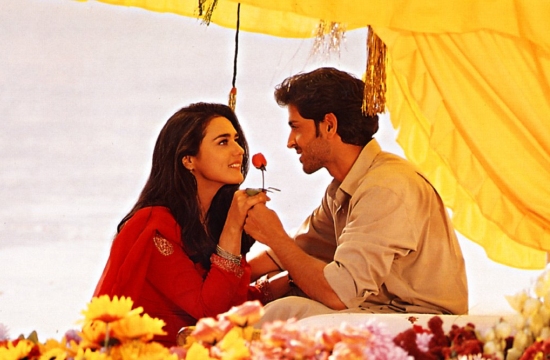
Cinema is one of the most potent mediums of promoting culture, but Bollywood has used Kashmir either for its scenic beauty or to create an enemy centric ultra-nationalistic portrait of the embattled state among the Indian cinemagoers. SHAMS IRFAN goes down the memory lane tracing the Bollywood Kashmir motifs.
Bollywood films shot in Kashmir often generates interest among Indian audiences to visit the place and explore the virgin locales shown on silver screen for themselves, giving a boost to the tourism industry in the state.
For decades the beautiful landscapes of Kashmir provided perfect backgrounds for shooting romantic songs and sequences for some of the biggest blockbusters of Bollywood. Till recent times the post card sized photographs of tall Kashmiri poplar trees lining the Narbal road decorated many drawing rooms in Indian homes, thanks to famous number pukaarta chala hoon main galli galli bahaar ki, picturised on Biswajeet driving his trademark Willys Jeep through it while chasing beautiful Asha Parekh in 1965 musical hit Mere Sanam.
Or the wild boy of Bollywood Shammi Kapoor singing yeh chand sa roshan chehra on a flower decorated Shikara to lure Sharmila Tagore in 1964 super hit film Kashmir Ki Kali, made both Dal Lake and Shikara synonymous with Kashmir culture for Indian audiences. But after the armed uprising in Kashmir in 1989, the same Shikara was blown into pieces (Mission Kashmir) by Indian filmmakers trying to milk the conflict for commercial success.
During 1990s Kashmir was virtually shut down for Indian visitors. According to data available with Jammu and Kashmir state tourism department, in 1988 the number of Indian tourists who visited Kashmir were 6,62,097 while 59,938 foreigners visited the valley in the same year. But during the peak years of militancy in Kashmir in 1993 not even a single tourist from India visited the valley while the number of foreigner tourists always remained in four digits. In 1994, 1995 and 1996 only 500, 322 and 375 Indian tourists visited Kashmir respectively.
But in an attempt to woo Indian audiences with a new brand of celluloid patriotism filmmakers revisited Kashmir from an emotional theme. And Mani Ratnam’s Roja (1992) was one of the first few Bollywood films to use Kashmir conflict as a backdrop. The film originally made in Tamil was premiered in Chennai on August 15, 1992; it became a runaway success after it was dubbed in Hindi for the Bollywood audience. Apart from A R Rehman’s mesmerising music, Roja had the perfect dose of over-the-top jingoism as it tells a semi-believable story about a Tamil cryptographer (Arvind Swamy) who is sent to Kashmir on an undercover assignment and is kidnapped by militants. His wife (Madhoo) struggles hard to get him released from the militants who demand the separation of Kashmir from India and the release of their leader from custody. To serve the front bench audiences Mani Ratnam makes his protagonist risk his life to save the Indian flag from being burned down by the militants.
The movie had shades of the kidnapping of an Indian Oil Corporation (IOC) executive and references to the swap under which Rubaiya Sayed, daughter of then home minister of India, Mufti Mohammed Sayed, was freed in exchange for five jailed militants of the Jammu and Kashmir Liberation Front (JKLF).
Following Roja’s success at the box-office, producers played the Kashmir theme from different, sometimes semi-informed and awkward angles. The films included Gunahghar, Diljalay and Zor. They had, variously, focused and indirect references to the Kashmir crisis. Following in their footsteps was another celluloid child of the crisis, Anghar Wadi Kashmir, which was never released.
Another film that made national headlines was director Mukul Anand’s Dus. The big budget film had as its setting, the revered Chrar-e-Sharief Township, which was destroyed in May 1994 following a prolonged standoff between the Indian army and besieged militants led by the Pakistani Mast Gul.















